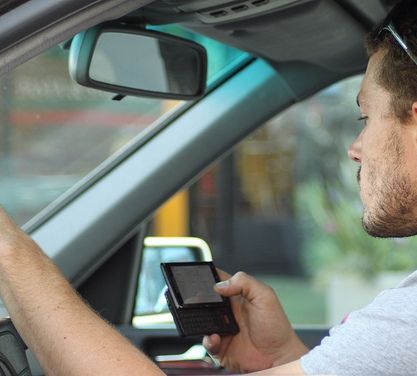How to solve the distracted driving problem
Is talking on the phone while driving illegal? [Part II]
 |
| Photo Credits: Flickr user Lord Jim |
Making laws declaring mobile phone usage illegal is probably the easiest but the most difficult to implement solution to this problem. The solution lies in using technology to circumvent the problem. Humans today do not engage in several non-productive tasks such as those involving physical labour or extreme precision - we have for all practical purposes reallocated those tasks to machines. So why can't we allocate the chore of driving to cars themselves?
The technology to do this is within the our abilities today. "Passenger aircraft have long been able to land themselves. Driverless trains are commonplace. Fully self-driving vehicles are being tested around the world. Google's driverless cars have clocked up more than 250,000 miles in America. Volvo demonstrated a platoon of autonomous cars on a motorway, in Barcelona a few days ago. In fact, Volvo's new V40 hatchback essentially drives itself in heavy traffic. It can brake when it senses an imminent collision, as can Ford's B-Max minivan." says The Economist.
New York Times reported that other major automobile manufacturers are working on self-driving systems in one form or another. The agni-pariksha (ultimate test of truth) of driverless cars happened when VIAC (VisLab Intercontinental Autonomous Challenge) as an extreme test of autonomous vehicles ran four driverless vehicles on a 15,000 km trip from Parma, Italy to Shanghai, China with virtually no human intervention [references].
Check out this TED video about how driver-less cars can help increase road safety - as he says "Now I think there's a vision here, a new technology, and I'm really looking forward to a time when generations after us look back at us and say how ridiculous it was that humans were driving cars."
However, there are many hurdles in the way of driverless cars - the first being the mundane legal system. The technology is ahead of the law in many areas," citing state laws that "all presume to have a human being operating the vehicle", stated Bernard Lu, senior staff counsel for the California Department of Motor Vehicles as per the New York Times.
The second challenge is a far more complex moral challenge - what happens when a driverless car is faced with a choice between hitting a pedestrian vs. hitting a tree when not hitting the tree would end up injuring the pedestrian outside and hitting the tree will cause harm to passengers in the car. Even more challenging, if such a situation results in an accident, should the programmers at Google be charged? The Google Trolley problem illustrates this moral dilemma in a beautiful way. The Economist captures here these moral challenges in greater depth and in wider expanse for all kinds of autonomous systems, not just cars.
But for now, such larger questions can wait, because we are really not talking about completely autonomous vehicles yet. We need to today settle down at the middle ground of technology aided, human directed driving experience which circumvents the moral challenges, fixes responsibilities on humans, yet makes it safer for us to drive. Take a simple example - several cars are equipped today with proximity sensors which inform the driver through a beep if another car is less than a meter away in the front or less than a foot on the side; parking assist mechanisms also work in similar fasion. Some high end cars come with Electronic stability control which automatically applies the brakes to help "steer" the vehicle upon detecting loss of steering control.
Similarly, we don't need fully self driven cars - can we not extend these safety and control systems? Mobile phone usage is a problem because it distracts the driver, but a distracted driver's attention can be augmented with sensors in the car, so that the car can either apply brakes or auto maneuver itself to the curb to avoid accidents such as fatal collisions, hitting a pedestrian or uncontrolled movement of the steering wheel. If, in spite of sensors, an accident occurs, the onus then falls on the driver eventually - but we need to give the driver a chance to react to the situation with all available technological tools available.
This also means that we need to make such technology mandatory in all cars irrespective of their price. Safety of human life is paramount, just like we have emission norms for vehicles, we have safety norms, such as seat belts and air bags; sensor based automated safety mechanisms also need to be made a part of such norms. As a corollary, research in these areas cannot remain only privately funded. For car makers to make such cutting edge technology available in low-end passenger cars, they either need to be compensated for the research or the money for such research needs to come from public funds.
The challenges of doing so in the current post slowdown world are more political than commercial or technological. And political will and decisiveness is where the world at large faces a huge deficit today. Yet, hoping against hope, I believe the day is not far when using the mobile phone while driving will be a common act because it will not pose any real threat of road accidents thanks to technology!
.
Comments
Post a Comment